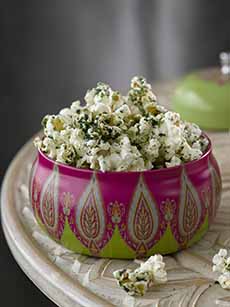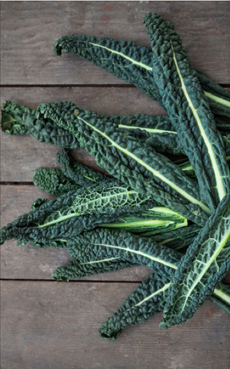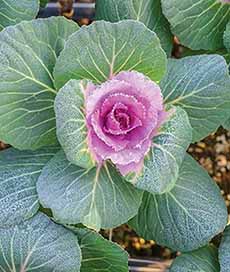FOOD FUN: Kale Popcorn
|
If you’re a member of the kale cult, here’s a recipe for your repertoire: popcorn with kale (photo #1). It’s easy to make, with purchased popcorn and kale chips. Or, pop your own and microwave kale into chips (photo #5). Popcorn is already a better-for-you, whole grain snack. Now, you can add this recipe from the National Popcorn Board. Kale is a nutritional powerhouse, a member of the Brassica genus, which includes bok choy, broccoli, brussels sprouts, cauliflower, cabbage, kale, kohlrabi, mustard greens and turnips, among other veggies. It’s rich in powerful, cancer-fighting antioxidants, phytonutrients and carotenoids. It’s also an excellent source of calcium, fiber, iron, manganese, potassium and vitamins A, B6, C and K. Cooking may destroy the phytochemicals, which is why raw kale salad is popular among health-focused consumers in-the-know. Ingredients For 10 Cups 1. PLACE the popcorn in a large bowl. Wisk in the lime zest, lime juice and melted butter. Toss to coat the popcorn. 2. SPRINKLE the kale over the popcorn, mixing to distribute evenly. Kale, also called leaf cabbage, is one of the cultivars of cabbage (Brassica oleracea). Kale plants have green or purple leaves, and the central leaves do not form a head. Kales are considered to The name is derived from the Northern Middle English cale (compare Scots kail) for various cabbages. That word evolved from the Latin word for cabbage, caulis. Kale originated in the eastern Mediterranean and Asia Minor, where it was cultivated before 2000 B.C.E. By 400 B.C.E., curly-leaf and flat-leaf varieties of cabbage existed in Greece. Referred to by the Romans as Sabellian kale, these are considered to be the ancestors of modern kales. Records of cabbages in western Europe date to the 13th century. In 14th-century England, records distinguish between the hard-heading cabbage and loose-leaf kale. Russian kale was introduced into Canada, and then to the U.S., by Russian traders in the 19th century. USDA botanist David Fairchild is credited with introducing kale to Americans, having brought it back from Croatia (irony: Fairchild himself disliked cabbage and kale). At the time, kale was widely grown in Croatia mostly because it was easy to grow and inexpensive, and could desalinate soil. For most of the 20th century, kale was primarily used in the U.S. for decorative purposes. It became more popular as an edible vegetable in the 1990s, with increasing focus on nutrition. It became pegged as a “nutritional powerhouse” and a “superfood,” and has remained on healthful-eating list ever since. Kale varieties can be differentiated by the length of the stem and the type of leaf (photo #3). Stems vary from short to long, and leaf colors include light green, medium green, dark green and violet-green, plus violet-brown. Leaf styles include: Ornamental kale or rebor kale is yet another variety with many cultivars (see one of them in photo #4). It is grown as a decorative plant, and even used in floral arrangements. The center rosette can be blue, lavender, pink, red or violet. While ornamental kale is as edible as any variety, the tough leaves are not as palatable. Source |
|
|
|
|
||




